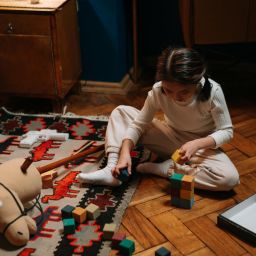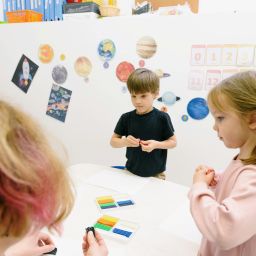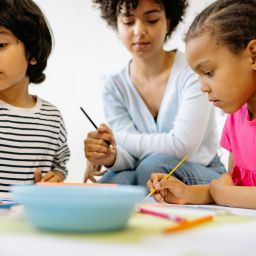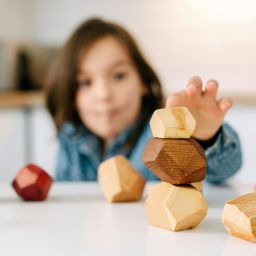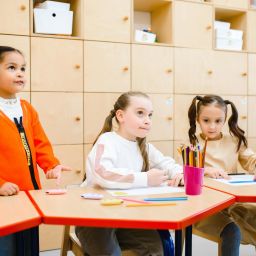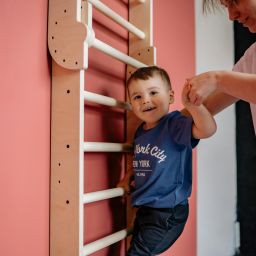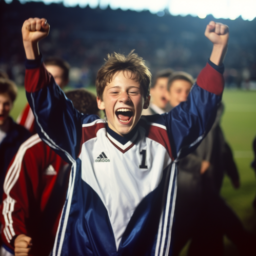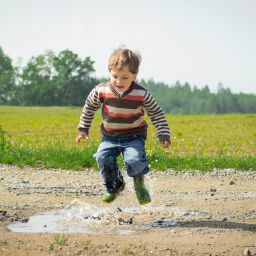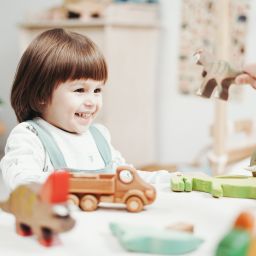
FH Summary: This post explores the power of visualization in child development, drawing inspiration from Olympic swimmer Michael Phelps and his pre-race ritual. Visualization is described as a cognitive process that involves generating mental images and immersive mental rehearsals. It highlights the impact of visualization on physical and mental states, emphasizing its role in enhancing performance, promoting creativity and improving problem-solving skills. The post explains how visualization can bridge the mind-body gap, aid emotional mastery, and unlock goal setting and achievement. The importance of incorporating visualization early in a child’s life is emphasized, as it can lead to an upward spiral of personal growth and achievement.
On today’s transformative journey, we delve deeper into the fascinating realm of visualization and its powerful role in our children’s growth and development. Our guiding light comes from a man who redefined the boundaries of sporting excellence – the legendary Olympian, Michael Phelps. Phelps’ inspiring pre-race ritual, centered around the art of visualization, offers valuable lessons that can significantly influence our children’s growth trajectory, propelling them onto an upward spiral of self-improvement and actualization. For a deeper dive into the basics of visualization or to supplement this post, please refer back to our initial content as to why visualization is one of the most important First Habits (we called it the “lowest hanging fruit” in your child’s development pathways), please see our post here.
Let’s venture into this powerful habit together.
Unraveling the Mystery of Visualization
Just to recap, visualization is a cognitive process that allows us to generate mental images, mirroring experiences we might encounter in reality. However, visualization is more than a simple act of mental picturing. It is an immersive, multisensory process that employs all our senses to craft a detailed mental rehearsal of a specific scenario or event.
Various studies highlight the profound impact visualization can have on both our physical and mental states. From enhancing performance in sports and academics to promoting creativity and problem-solving skills, visualization, when appropriately harnessed, can be a compelling tool in achieving our goals.
The Phelps Phenomenon: Pre-Race Rituals and the Pathway to Success
Michael Phelps, the most successful Olympian in history, offers an illuminating insight into the power of visualization. His meticulously crafted pre-race ritual, profoundly rooted in visualization, became a cornerstone of his unmatched success in the swimming world.
Before every race, Phelps would isolate himself from the world around him, closing his eyes and immersing himself in the mental rehearsal of the race ahead. His visualization was so detailed that he could sense every element of the race: the adrenaline rush of the dive, the rhythm of every stroke, the precision of the turns, and the gratification of touching the wall at the finish.
Sports psychologist Michael Gervais eloquently expressed that the goal of visualization is “to create such a lifelike experience that your body believes that it could be real.”
Interestingly, Phelps’ visualization extended beyond perfect scenarios. He would also mentally rehearse various challenges he could face during the race and devise strategies to overcome them. Check out this short video of Michael and his coach, Bob Bowman, talking about the importance and uses of visualization.
This holistic approach to visualization prepared him for any eventuality, instilling a profound sense of self-confidence and resilience that significantly contributed to his unprecedented success in the pool.
Transcending the Pool: Phelps’ Lessons for Life
While Phelps’ visualization ritual emerged within the realm of competitive swimming, its principles extend far beyond sports. This commitment to visualization epitomizes the power of good habits – habits that can trigger an upward spiral in life, fuel personal growth, and propel individuals toward their potential.
The importance of such habits is amplified in children, who are in the formative stages of habit development. Integrating practices like visualization into their daily routines can equip them to better navigate life’s challenges, fostering essential traits such as resilience, confidence, and adaptability.
Harnessing Visualization: A Potent Tool for Child Development
Understanding the principle of visualization and its significance is one thing, but how exactly does it influence child development? And how can we, as parents and caregivers, embed this key First Habit in our children’s lives in a manner that is effective, enjoyable, and most importantly, sustainable?
Let’s dive deeper into the intricacies of effective visualization.
The Neural Magic: Bridging the Mind-Body Gap
Visualization leverages the power of the brain-body connection. When a child engages in mental rehearsal of an action, the brain simulates the experience as if it were physically happening. This process strengthens the neural pathways associated with the action, gradually improving the child’s ability to execute it. Regular visualization can thus enhance skills, build confidence and ultimately, boost performance.
Emotional Mastery Through Visualization
In addition to improving skills, visualization is a powerful tool for emotional regulation. It enables children to mentally rehearse positive scenarios or outcomes, fostering optimism, reducing stress, and cultivating a more positive mindset. This practice can serve as a valuable coping mechanism, helping children navigate moments of anxiety or stress. The visualization of negative scenarios holds a double-pronged importance. By visualizing challenges that may arise and then visualizing how your child can overcome those hurdles, you can help them build resilience and have a greater understanding that one speed bump shouldn’t deter them from their ultimate goals.
Secondly, help your child realize that even if there is a significant challenge that they come across on their way to their goal, their frame of mind and emotional state don’t have to be dependent on that one small negative outcome. Have them practice seeing themselves at the end of a scenario that doesn’t quite go their way. Do they have another chance to pick themselves up and try again? Of course. Are you as their parents still going to support them and “have their backs” going forward? Absolutely. It is so often the case that the fear of failure and the anxiety caused by these future states can oftentimes be more daunting and dissuading than the actual reality of the negative states. That is something that is so important for ourselves and our children to realize and the sooner in their development that your children realize this truth, the better they will be equipped to deal with any situations where they come up short.
Visualization: A Key to Unlocking Goal Setting and Achievement
Visualization plays a pivotal role in goal setting and achievement. By mentally “seeing and feeling” their goals, children can perceive them as tangible and achievable, which can serve as a powerful motivator. Moreover, visualization can facilitate the breakdown of larger, daunting goals into smaller, manageable steps, making the journey towards achievement less overwhelming and more approachable.
A Tale of Transformation: The Power of Visualization in Action
To truly appreciate the transformative power of visualization, let’s consider the story of Sarah, a ten-year-old girl with a dream of mastering the piano. Despite her passion, Sarah struggled with debilitating performance anxiety, which hampered her progress.
Inspired by Phelps’ story and his pre-race ritual, Sarah began to incorporate visualization into her practice sessions. She would imagine every detail – the smooth feel of the keys under her fingers, the rhythmic harmony of the music, the applause at the end of her performance. She also anticipated potential mistakes and visualized herself continuing to play calmly despite them.
Over time, her visualization practice bore fruit. Her performances improved dramatically, and her fear of making mistakes gradually diminished. More importantly, Sarah developed a deeper love for the piano, and her self-confidence bloomed. Sarah’s story beautifully illustrates how visualization can lead to an upward spiral in a child’s life, fostering resilience, passion, and self-belief.
Envisioning a Brighter Future with First Habits
Like any potent habit, visualization requires consistent practice. As parents and caregivers, we play a crucial role in guiding our children in developing and refining this powerful tool. By instilling this habit early, we make a valuable investment in our children’s future, equipping them with a skill that can serve them in myriad ways throughout their lives.
At First Habits, we are committed to supporting you and your child on this transformative journey. Our content, grounded in sound research and real-word scenarios, offers practical strategies to cultivate optimal habits like visualization. By embracing such practices, we empower our children to take control of their future, guiding them onto an upward spiral of personal growth and achievement.
We invite you to delve deeper into the world of child development with us. Visit the First Habits website and sign up for our weekly newsletter for more insights into fostering beneficial habits in your children. Together, we can shape a future where our children are not just dreamers, but achievers.


